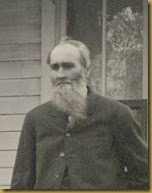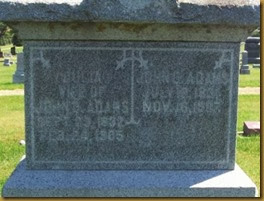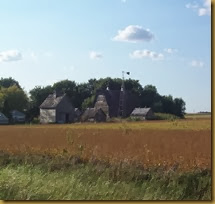This blog post was inspired by Amy Johnson Crow 's "
52 Ancestors in 52 Weeks" challenge. Learn more at her blog.
*******************************************
I was scooting along quite nicely with the Nickeson line until I hit Joseph, b. 1797 in either New York or Pennsylvania. I knew he married Margaret Coble in 1819 in Franklin county, Ohio, and between 1838 and 1840 had migrated to the Peoria county, Illinois area. But trying to find proof of his parents has been difficult.
Around the time of Joseph’s marriage, another Nickeson family resided in Franklin county – that of Aaron and Phebe Nickeson. Aaron died 1814, and his wife in 1842. Along the line, I was provided with a photocopy of a book, title unknown, which lists grave sites. Phebe Nickeson, “widow of Aaron,” is buried in Central Blendon cemetery, and there appears to be another grave south of this one that could be the unmarked grave of Aaron.
I began looking more closely at this couple, and found in some records they were “Nickerson” and in others, “Nickeson.” I contacted the Nickerson Family Association initially about ten years ago, inquiring of both Joseph, and Aaron and Phebe. It was felt by the chief researcher at that time that Joseph was indeed the soon of Aaron and Phebe, but no concrete proof had been found. Joseph, I was told, was probably born in New York, near the Pennsylvania border; Aaron and Phebe were in this area a the appropriate time. Also, one of Joseph’s sons was named Aaron. On this scanty basis, Joseph was tentatively placed in the family of Aaron and Phebe.
But now, having Joseph in Franklin county at the same time as Aaron and Phebe, I felt a little more comfortable with this assumption. I began looking at censuses, starting with 1800 in New York. I found an Aaron there with a female of the right age to be a wife, and 3 girls 10-26, and what looks like 3 boys under the age of 10. Joseph would have been 3 at that time.
Working backwards, I found an Aaron in 1790 in Albany county, New York; the family makeup appears to be the two parents, plus 3 daughters, consistent with what I found in 1800.
And this is the point where it quit being easy.
In 1810, there was no Aaron Nickeson or Nickerson to be found in New York. Ohio’s census records for this year were destroyed for all counties except Washington, and he wasn’t there either. He died in 1814, so I shifted the focus to his wife, Phebe. In 1820, the census is missing for Franklin county. In 1830, Ancestry.com does not list her in the census search results, and an attempt to browse the Franklin county census images was unsuccessful – Franklin county, for some reason, is not listed among the counties, although it was formed in 1803. I checked other Nickeson households in Ohio for the presence of a woman of the appropriate age, and did not find one; this, of course, does not rule out the possibility that she was living with a married daughter.
In 1840, there is an “A. Nickinson” in Franklin county, but no woman Phebe’s age in the household.
Turning to probate records, Aaron did leave a probate document, and I have a copy, but it is largely illegible. An abstraction in the Ohio Genealogical Quarterly lists the executors of his estate as Thomas McFeeley, John Brickle, and Uriah/Urri Nickerson. If this Nickerson is indeed Uriah/Urri, I have no idea who this Uriah is or how he connects, despite a tremendous amount of information from the Nickerson Family Association’s data. However – Aaron has a known brother, Uzziel, who lived in the same areas at Aaron, and was in Ohio by 1812 – two years before Aaron died. The signature at the bottom of the probate paper could have been “Urri”, or “Uzzi” in my opinion. The part of the paper that supposedly reads “Uriah” is equally as unconvincing. But unfortunately, regardless of who is the administrator, no other names appear on this document; it appears, from what I can make out, that it simply names the administrators.
I mentioned that Joseph moved his family to Illinois between 1838-1840, to an area in Peoria county near the Fulton county line. There is a Charles Nickerson in Fulton county, who moved there in 1837, from where I do not know. If Joseph is indeed the son of Aaron and Phebe, this Charles would be a very, very distant cousin, which opens up the possibility of Joseph perhaps being more closely related to this Charles than I’ve been thinking. Or, perhaps, it’s a coincidence that they ended up relocating to the same area at roughly the same time.
At any rate, as far as I can see, without some other clue to pursue I’m at the end of the line with Joseph, Aaron and Phebe Nickeson.

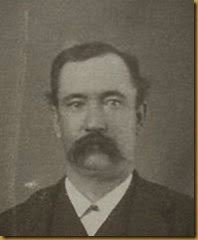
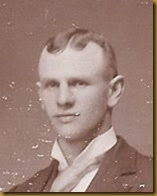

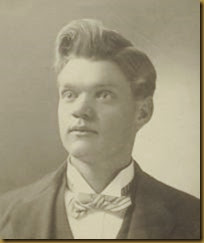
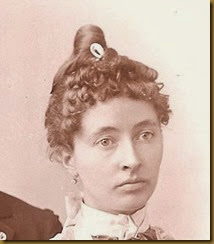
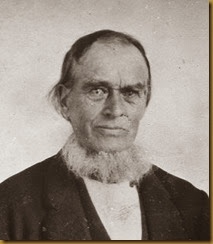
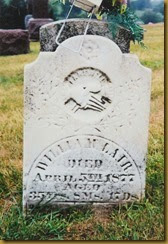
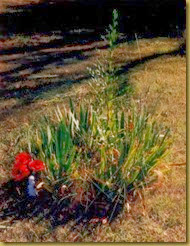
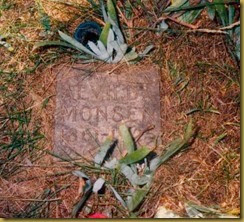
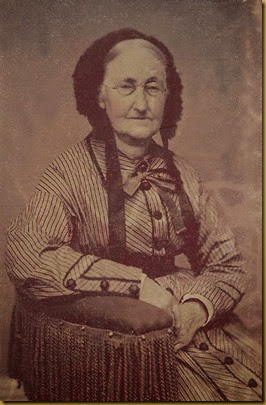
![VBChurch1883[3] VBChurch1883[3]](http://lh6.ggpht.com/-fDB69twjamk/Uyz7gAdlHXI/AAAAAAAADWo/pdLLNVwqnz4/VBChurch1883%25255B3%25255D_thumb.jpg?imgmax=800)
![VBChurch1209[2] VBChurch1209[2]](http://lh4.ggpht.com/-f7zdvh4VbXM/Uyz7h7ZQkHI/AAAAAAAADW0/McJsx8X-XZM/VBChurch1209%25255B2%25255D_thumb%25255B2%25255D.jpg?imgmax=800)
![VBChurch_1213[2] VBChurch_1213[2]](http://lh5.ggpht.com/-d4wm0XouHUg/Uyz7i_9dYaI/AAAAAAAADXI/JrP8oGJM2e8/VBChurch_1213%25255B2%25255D_thumb%25255B1%25255D.jpg?imgmax=800)
![VBChurch[5] VBChurch[5]](http://lh3.ggpht.com/-1p484tWup-8/Uyz7kE8KFII/AAAAAAAADXY/bSvBNaBL2R4/VBChurch%25255B5%25255D_thumb.jpg?imgmax=800)
